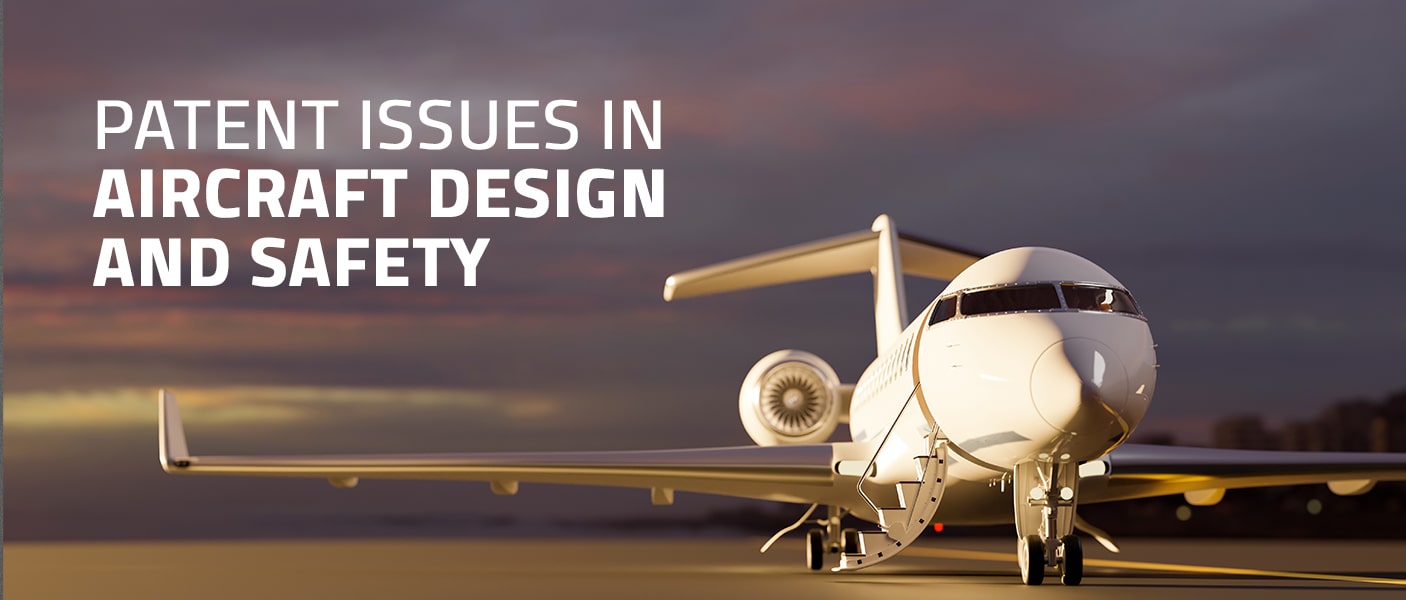Patent Issues in Aircraft Design and Safety: Innovation, Protection, and Progress
July 28, 2025 By Shruti NairThe excitement of aerospace lies in its relentless drive for innovation - new aircraft, smarter flight systems, and radical leaps in safety. But alongside this surge of invention comes the need to secure and defend new ideas. Let’s break down how Aerospace Patents, Aircraft Safety Innovation, and Intellectual Property (IP) Protection create both opportunities and challenges in the field of aircraft design and safety.
Why Patents Matter in Aerospace
New ideas are the driving force behind aviation. Aerospace patents grant inventors and corporations the legal right to use, sell, or license their inventions for a specified period, typically 20 years, depending on the type of patent. This exclusivity is the foundation for recouping R&D investments and sets the stage for future breakthroughs.
Patents serve as the backbone of innovation in the aerospace sector, ensuring that inventors and companies are rewarded for their groundbreaking work in sustainability and fuel efficiency.
But with the rapid pace of change in aerospace, the patent process itself demands speed and precision. Companies must file early and globally to ensure effective protection against competitors.
Types of Aerospace Patents and IP Protection
Aerospace innovations and designs can be protected in two forms:
- Patents: Protect new functionalities (e.g., hybrid-electric propulsion, novel wing designs, advanced safety features). These patents typically last 20 years from the filing date.
- Industrial Design s: Safeguard the appearance and aesthetic elements of an aircraft, including unique shapes, windows, cockpit layouts, or antennas. Protection lasts 15 years from the grant.
Both registrations are essential for complete Intellectual Property (IP) Protection, patent protection to secure how new aerospace technologies work, while Industrial design protections safeguard what they look like.
In addition, companies sometimes rely on trade secrets to protect manufacturing processes or core algorithms, especially if these are hard to reverse-engineer. For example, a proprietary process for assembling eVTOL aircraft might be kept confidential rather than patented, providing an edge if secrecy can be maintained.
Aircraft Safety Innovation: Taking Protection Seriously
Aircraft Safety Innovation is at the heart of aviation, driving continuous improvements in emergency systems, flight management, and accident prevention. Some examples of safety-related patentable innovations include:
- Advanced Flight Control Systems: E.g., systems capable of mitigating turbulence or optimizing takeoff using real-time weather data. Boeing, for instance, holds patents on flight control systems designed to reduce air traffic jams.
- Energy-Absorbing Structures: Patents may cover special seats, fuselage reinforcements, or crash-resistant landing gear, all designed to prevent injuries.
- AI-Driven Autopilots and Monitoring: Autonomous systems that manage takeoffs, landings, and mid-air adjustments are at the forefront of patent activity.
According to a recent report from The Daily Upside, “fault diagnosis” systems that speed up troubleshooting and enhance aircraft safety are gaining patent traction - reinforcing how IP protection underpins innovation in aviation.
These inventions become part of a company’s arsenal for aircraft safety innovation, and securing IP protection is both a business and a public good; fueling ongoing investment in safety upgrades and ensuring know-how isn’t simply copied or reverse-engineered by others.
Recent Trends in Aerospace Patents
- Hybrid-Electric and Sustainable Aircraft: There has been dramatic growth in patents for hybrid propulsion, electric motors, and energy-efficient components. RTX’s recent successes in hybrid-electric propulsion show the sector’s shift toward sustainability.
- eVTOL and Urban Air Mobility: Joby Aviation, Archer, and Lilium are racing to patent rotor designs, battery systems, and the interactivity of advanced control panels.
- AI and Flight Optimization: Patents in AI-driven route planning, real-time threat detection, and autonomous aircraft operation are on the rise and extending into both civilian and defense applications.
Key Patent Issues and Challenges
- Patent Eligibility and Scope
Aircraft systems, particularly those using software (e.g., AI-based flight controls), often face barriers at the patent office. If the system is perceived as an "abstract idea" or a basic mathematical formula, it can be rejected unless the practical, technological application is explicit.
- Documentation Quality
For industrial design protection, comprehensive, clear drawings are mandatory - the shape of an aircraft must be plainly submitted in different angles. For patent protection, the technical explanation must be complete enough for an expert to reproduce the invention.
- Global Protection and Fast-Filing
Aviation is a global market. Patenting must be pursued in multiple jurisdictions, meaning strategies like the Hague Agreement (for industrial designs) or Patent Cooperation Treaty (PCT) filings are often leveraged to cover large markets.
- Litigation and Enforcement
Patent litigation in aerospace is common, with high stakes. Invalid or overlapping claims can cause costly disputes, while strong IP portfolios protect against infringement and offer leverage in negotiations or cross-licensing.
Real-World Impact: Examples
- Boeing’s 777X: Patented folding wingtips allow this super-wide jet to park at standard airport gates, merging innovation with practicality.
- SpaceX’s Starship: Holds patents covering everything from antenna design to battery management, showing how IP protection fuels the competitive space race.
- Airbus’ A321XLR: Industrial Design and system patents secure their advances in long-range efficiency and safety over competitors.
Best Practices for Protecting Aircraft Inventions
- Comprehensive Prior Art Search: Before applying, ensure true novelty; aircraft technology moves fast, and patent offices scrutinize claims closely.
- Hybrid Protection Strategy: Combine patents and design with selective trade secrets to create robust barriers to competition.
- Internal Training on IP Awareness: Ensure engineers and designers know how and when to document and disclose potential inventions for IP protection.
- Early and Global Filing: Secure first-to-file advantages and extend protection globally using international filing treaties.
The Flight Path Ahead
Aerospace Patents, dynamic Aircraft Safety Innovation, and strong Intellectual Property (IP) Protection are inseparable from progress in aviation. Each new aircraft, flight control system, or safety device relies on a complex patchwork of legal rights and documentation to ensure the inventors and investors behind them can keep pushing boundaries and keep us all safe in the skies.
Patents don’t just protect companies; they protect the very future of aviation itself. Reach out to Parker & Parker Advocates to secure your innovations and shape the future with confidence.





